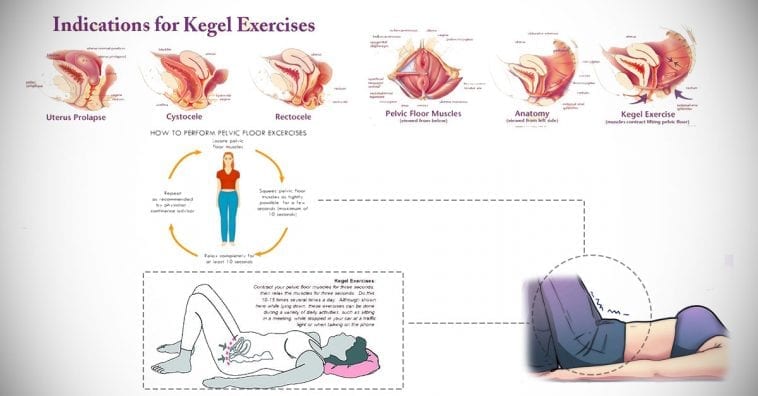
Image source: https://valentinbosioc.com/wp-content/uploads/2017/04/Basic_Kegel_Exercises_And_Their_Benefits-758x396.jpg
Sometimes, it's just a case of not finishing urination completely because of some other pressing matter. But, for others, it is a regular and embarrassing occurrence.
PMD is not the same as 'terminal dribble' which often occurs at the end of urination. It normally waits until you've rearranged your clothing and are about to leave the toilet area. Some men even report that gentle shaking to remove the drops is insufficient. A few drips of urine will still push themselves out of the urethra and wet your underwear or trousers.
Research has shown that it is not due to the exertion of redressing or to bladder dysfunction but is caused by a failure of the bulbocavernosus muscle to contract after micturition. This muscle partially surrounds the tube that takes urine away from the bladder (the urethra) and what is known as the urethrocavernosus reflex squeezes the urine out of that part of the urethra.
When it fails to work properly, a small amount of urine is left in the pipe, so to speak, and this can leak out as soon as you start moving. This malfunction may be due to surgery for enlarged prostate, continual straining to empty your bowels (constipation), constant coughing, obesity, neurological conditions, persistent heavy lifting or weak pelvic floor muscles.
The pelvic diaphragm (or Pubococcygeus muscle) runs like a sling between your legs from the base of the spine to the pubic bone and is just like any other muscle. If it is not exercised, it will weaken through lack of use.
What the experts do agree on is that the most effective method of controlling post micturition drip is through improving the strength of the pelvic floor by regular kegel and pelvic floor exercises.
The most noticeable success has been seen through teaching sufferers to perform a couple of strong pelvic floor contractions as soon as they have completed urinating. It is thought that this may help to expel the trapped urine from the bulbar urethra and, done regularly, will restore the urethrocavernosus reflex sufficiently to minimise the embarrassing symptoms of after-dribble.
To achieve the best results, in addition to tightening your pelvic floor after you have emptied your bladder, you need to incorporate a daily routine of strong contractions to improve muscle control. This will allow the pelvic floor to work quickly and effectively to prevent leakage if there is a sudden increase in intra-abdominal pressure, like sneezing. These muscles also need to be trained for endurance - to be able to hold on for some time without letting go so that you can get to the toilet without leaking. The latter can be achieved by tightening and gently lifting the pelvic floor slightly whilst walking.
For the strength (or maximal) contractions, stand in front of a mirror with your feet apart and then tighten the muscles around your anus as if you were trying to avoid breaking wind. You will notice that your genitals appear to move upwards towards your abdomen. Hold that contraction as strongly as you can (without tensing your buttocks or thighs) for ten seconds whilst continuing to breathe normally.
Perform these strong contractions three times in the morning and again in the evening.
As an aside, because the bulbocavernosus muscle is largely responsible for not only the complete evacuation of urine, but also penile rigidity and ejaculation of semen, any dysfunction may also cause a loss of the reflex required to produce enough force to ejaculate properly.
This is why experts are looking at links between post-micturition dribble and erectile dysfunction.
For men where there is no neurological impairment, kegel and pelvic floor exercises may well help to prevent both these distressing conditions.